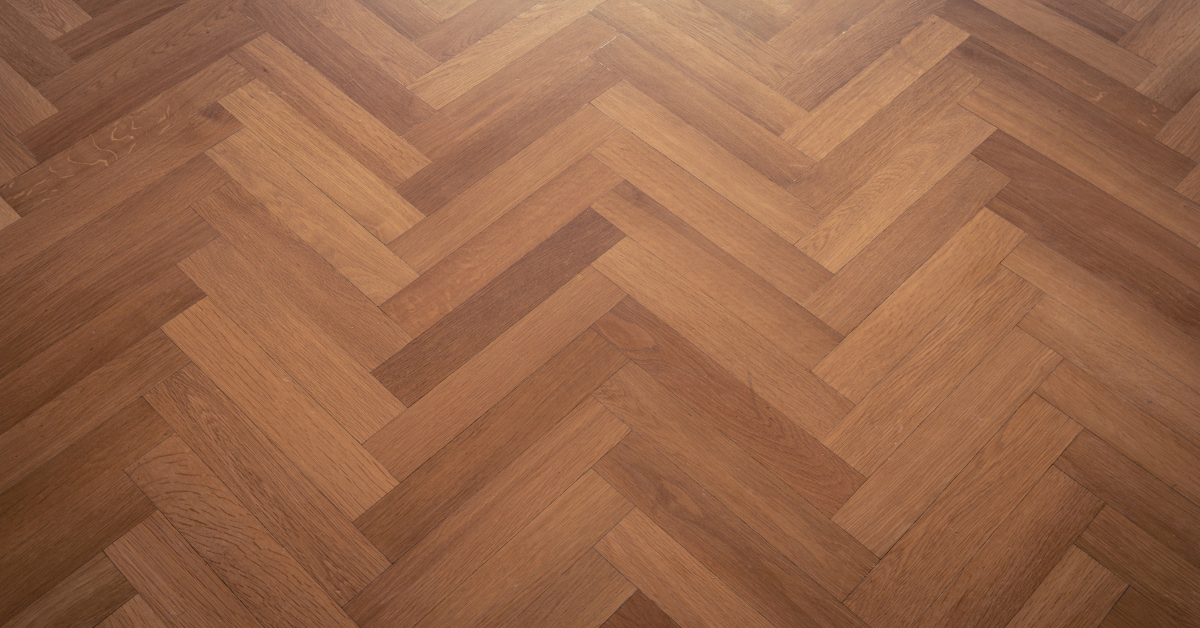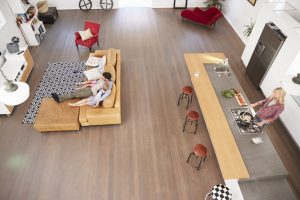Let’s face it – there’s something undeniably gorgeous about a hardwood floor. That warm, natural glow. The rich character that seems to tell a story. The way it makes customers nod appreciatively when they walk in. But when you’re running a busy commercial space with people trampling through all day long, is that beautiful hardwood really up to the job? Or are you setting yourself up for a maintenance nightmare?
As someone who’s seen their fair share of commercial flooring triumphs and disasters, I’m here to give you the unvarnished truth (wood pun fully intended).
The Allure of Hardwood in Commercial Spaces
Before we get into the nitty-gritty, let’s acknowledge why so many business owners find themselves drawn to hardwood in the first place:
- It makes a statement. A quality hardwood floor screams “premium” without saying a word. It’s why high-end retailers, boutique hotels, and swanky restaurants often opt for it.
- It’s got staying power. While interior design trends come and go faster than you can say “millennial pink,” hardwood has remained consistently desirable for centuries. You won’t need to rip it up in five years because it looks dated.
- It’s a chameleon. From ultra-modern minimalist spaces to traditional heritage buildings, hardwood can complement virtually any aesthetic.
But the million-pound question remains: can it handle the daily onslaught of foot traffic, rolling equipment, spills, and general commercial chaos?
When Hardwood Works in High-Traffic Areas
Right, let’s not beat around the bush – standard residential hardwood floors would indeed throw in the towel pretty quickly in most busy commercial environments. But that doesn’t mean all hardwood is out of the question. Here’s when it can work brilliantly:
Commercial-Grade Hardwood Exists (And It’s Tough as Nails)
First thing’s first – the hardwood you’d put in your living room is NOT the same as commercial-grade hardwood. Commercial options feature:
- Tougher finish systems that can withstand heavy foot traffic
- Thicker wear layers that allow for multiple refinishings
- Factory-applied aluminum oxide finishes that are significantly more scratch-resistant than residential versions
Choose Your Wood Wisely
Not all woods are created equal when it comes to hardness. The Janka hardness scale (a fancy way of measuring how resistant wood is to wear and denting) puts some species miles ahead of others:
- Oak (particularly white oak) remains a commercial staple for good reason – it’s relatively hard, readily available, and takes stain beautifully.
- Hickory and Maple are even harder, making them excellent choices for very busy areas.
- Brazilian Cherry and Ipe are among the hardest woods available, though they come with a heftier price tag.
Steer clear of softer woods like pine or American cherry in high-traffic zones – they’ll look like they’ve been through the wars within months.
Engineered Can Be Your Best Mate
Engineered hardwood (which has a real hardwood veneer over a plywood core) often outperforms solid hardwood in commercial settings because:
- It stands up better to humidity fluctuations
- Higher-quality options have thick wear layers that can be refinished multiple times
- Some come with commercial-grade aluminum oxide finishes that are practically bulletproof
When to Think Twice About Hardwood
I’d be doing you a disservice if I didn’t mention when hardwood might not be your best bet:
The Splash Zones
Areas prone to significant water exposure – think entryways where people drip rain (this is Britain, after all), or café counters where spills happen hourly – can be problematic for hardwood. While quick clean-ups won’t cause issues, standing water is hardwood’s nemesis.
The Heavy Machinery Areas
If you’ve got heavy equipment rolling about regularly, those wheels can leave their mark. Proper chair mats and furniture protectors can help, but if you’re dealing with industrial-level equipment, you might want to consider other options.
The Budget-Conscious Project
Let’s talk money, shall we? Quality commercial-grade hardwood isn’t cheap, especially when you factor in professional installation. The initial outlay is significantly higher than options like LVT (Luxury Vinyl Tile) or laminate.
Making Hardwood Work in Commercial Settings
If you’re still set on hardwood (and I don’t blame you – it’s gorgeous stuff), here’s how to give it the best chance of success:
Proper Installation Is Everything
Commercial hardwood installation is not a DIY job or one for your mate’s cousin who “does a bit of flooring on the side.” Invest in proper commercial installation that includes:
- Adequate acclimation of the wood to your space
- Proper subfloor preparation
- Commercial-grade adhesives when appropriate
- Expansion gaps to accommodate natural movement
Maintenance Matters
A good maintenance routine will extend your floor’s life considerably:
- Daily sweeping or dust mopping to remove gritty particles that scratch
- Regular cleaning with hardwood-specific products (general floor cleaners can damage finishes)
- Prompt attention to spills
- Refinishing before the wear layer is completely worn through
Strategic Use of Rugs and Mats
Think of entrance mats and strategic rug placement as body armor for your hardwood:
- Heavy-duty entrance mats capture dirt, debris, and moisture before they reach your hardwood
- Runner rugs in extremely high-traffic pathways absorb the worst of the wear
- Chair mats under rolling office chairs prevent those telltale wheel marks
The Middle Ground: Creating “Traffic Zones”
One clever approach I’ve seen work well is using hardwood strategically while opting for even more durable flooring in the absolute highest-traffic areas. For example:
- Hardwood in a restaurant’s dining area, but porcelain tile in the walkways and around the bar
- Hardwood in a retail space’s main floor, but luxury vinyl tile at the entrance and checkout areas
- Hardwood in office common areas, but carpet tiles in the most heavily trafficked corridors
The Verdict
So, is hardwood suitable for high-traffic commercial areas? The properly nuanced answer is: it depends.
With the right species, the right finish, proper installation, and diligent maintenance, commercial-grade hardwood can indeed stand up to significant foot traffic. It’s not the easiest or cheapest option, but the aesthetic payoff can be well worth the extra effort for many businesses.
The key is going in with eyes wide open about what it will require in terms of initial investment and ongoing care. If you’re prepared for that commitment, hardwood can indeed be a stunning and durable choice for your commercial space.
And remember – getting advice from flooring specialists who understand commercial environments (rather than residential installers) can make all the difference between a hardwood floor that still looks stunning five years in, and one that has you wondering what on earth you were thinking after just six months.
At the end of the day, hardwood in commercial spaces is a bit like that friend who’s high maintenance but absolutely worth it. Treat it right, and it will make your commercial space shine for years to come.




